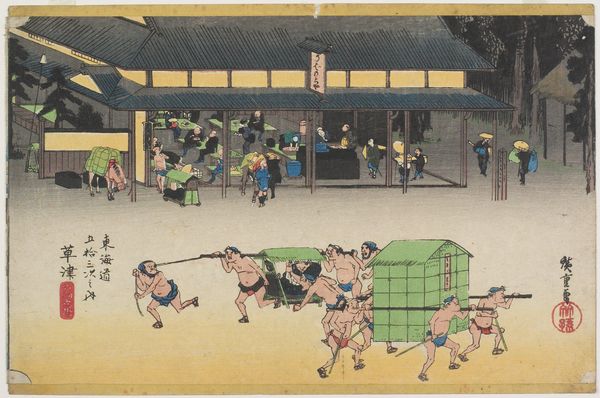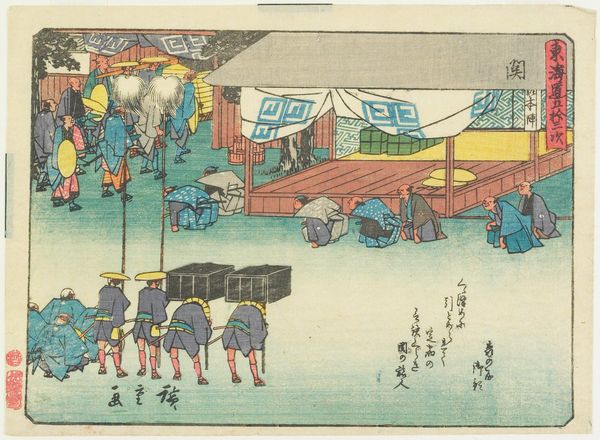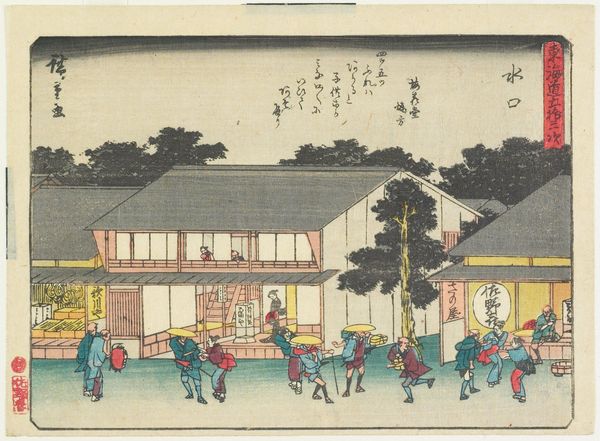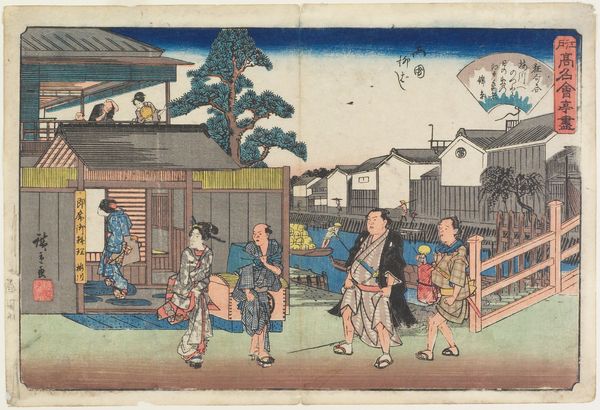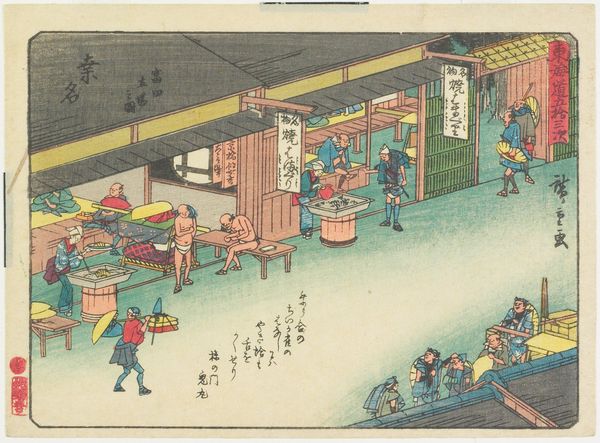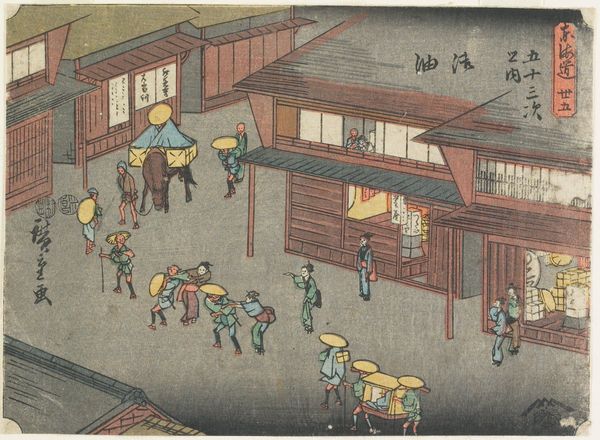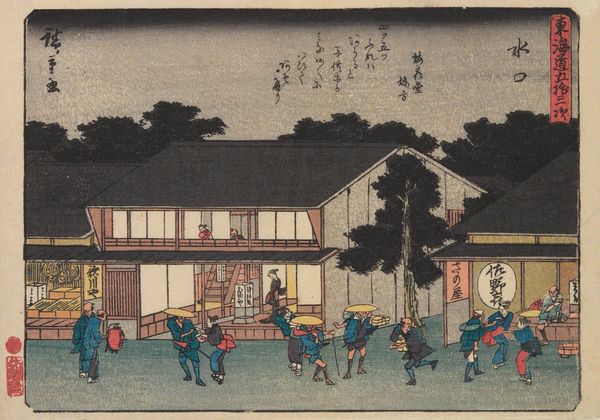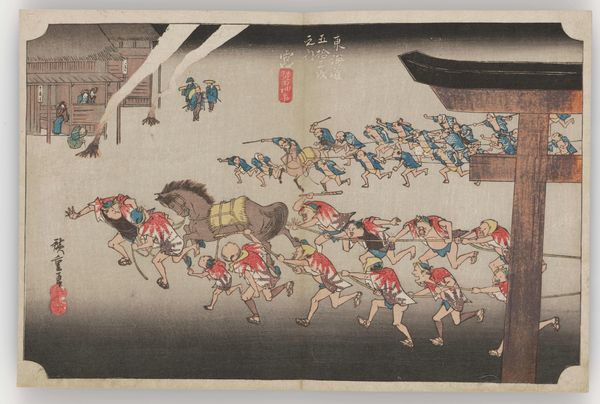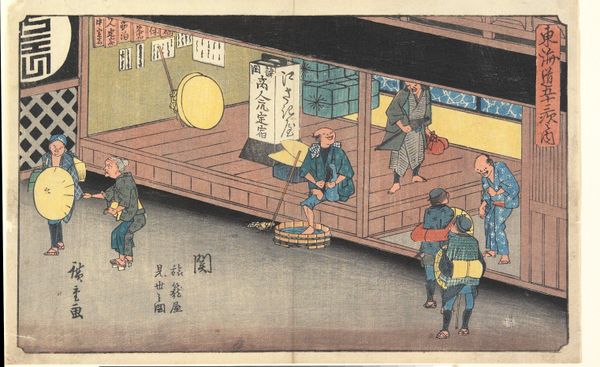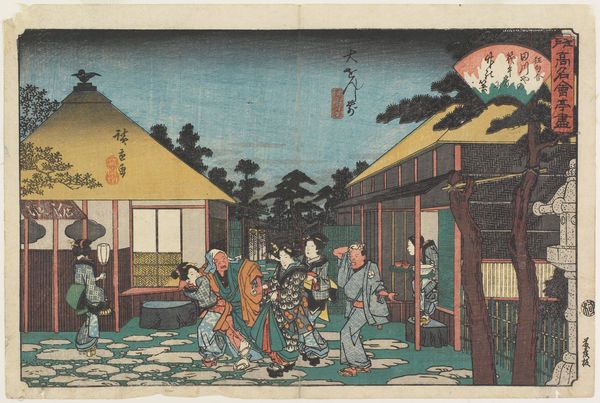
Kusatsu--Famous Horse-Changing Station c. 1832 - 1833
0:00
0:00
print, paper, ink, woodblock-print
# print
#
asian-art
#
landscape
#
ukiyo-e
#
paper
#
ink
#
coloured pencil
#
woodblock-print
#
genre-painting
Dimensions: 9 1/2 × 14 1/4 in. (24.13 × 36.2 cm) (sheet, horizontal ōban)
Copyright: Public Domain
Curator: The artwork before us is "Kusatsu--Famous Horse-Changing Station" by Utagawa Hiroshige, a woodblock print created around 1832-1833. It’s part of the collection at the Minneapolis Institute of Art. What's your initial reaction? Editor: It strikes me immediately as a scene teeming with activity, but tinged with what feels like a relentless kind of energy. You have all these figures and structures packed into one visual space. It creates an overwhelming feeling that speaks to the harsh realities of labor and transit of the time. Curator: Indeed. This work is a beautiful example of ukiyo-e, pictures of the floating world. Hiroshige masterfully captures daily life, specifically at Kusatsu, a post station along the Tokaido Road, a crucial route connecting Edo—modern Tokyo—to Kyoto. Look at how the figures almost blend into the architectural landscape; what do you make of that? Editor: The lack of individual detail, especially in the figures pulling what appear to be covered litters, it's striking. This diminishes individual agency; we see bodies subjected to the demands of transportation and service. This echoes larger issues surrounding exploitation and social disparity during the Edo period. There is the clear difference in labour from those under cover to those pulling them that cannot be ignored. Curator: That's a very insightful observation. The emphasis on the collective and the everyday holds deep significance. These post stations weren't just pit stops. They represented commerce, communication, and the lifeblood of Japan’s societal structure. See how the roofline suggests the scale and stability of that hub in contrast with the frenzy beneath it. Editor: Exactly! The building, a traditional rest stop, acts almost as a visual barrier to block those in service to those being served. You can imagine the conversations, transactions, and interactions that happen under its roof stand as yet another echo to an economic system of wealth division. I’m compelled to reflect upon what such transit infrastructure has meant and what it has cost through time. Curator: A thought provoking insight! And a great way to consider that every mark, intentional or otherwise, gives clues to larger structures, continuities, and legacies across time. Thank you for joining me. Editor: Thank you; seeing it as a moment within complex forces sheds such a strong light.
Comments
No comments
Be the first to comment and join the conversation on the ultimate creative platform.
